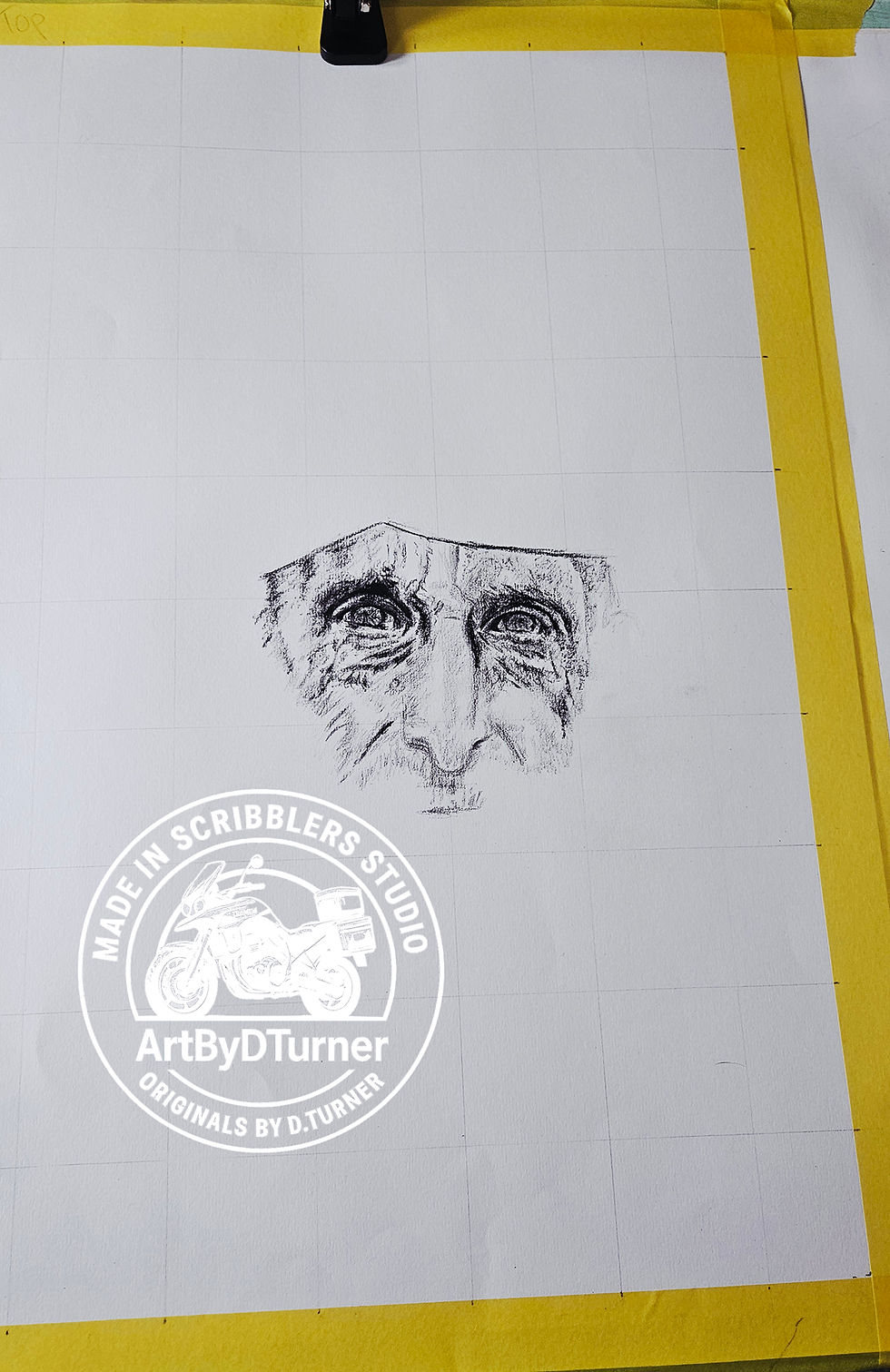The Tools Behind My Landscape Charcoal Drawings
- artbydturner
- Sep 16
- 3 min read
Every drawing begins with a blank sheet of paper and a moment of instinct. I don’t map things out with a grid or prepare with sketches. Where the charcoal first meets the paper is where the drawing starts. It’s a simple, direct approach – almost like telling myself, let’s get this done.

Choosing the Paper
The foundation is always the paper. For my larger works, I rely on Clairefontaine 80 x 120 cm – 180gsm, usually cut in half to give me a big, sturdy surface to work with. The scale allows me to really get lost in the landscape, filling the page with sweeping skies and distant horizons.
For smaller pieces, I often turn to Seawhite 42 x 59.4 cm – 140gsm. It’s lighter but holds charcoal beautifully. I like how manageable this size feels – still generous enough for atmosphere, but more intimate in scale.
Building the Landscape
Charcoal is the heart of the process. I use Coates willow powder to lay down those first atmospheric tones – shadows stretching across fields, clouds rolling in above a moor. Then, with Coates willow sticks, I bring in structure, the edges of trees, the line of a hill, or the detail of a path leading you into the distance.
Over time, I’ve tried different brands of willow charcoal, but I’ve found Coates to be the most resilient and the best value. It gives me the balance I need between strength and softness, allowing me to work freely without worrying about the sticks crumbling too easily.
Sometimes the landscape calls for a little light. That’s when I’ll add touches of Gallery white soft pastel. Just a highlight here and there, a break in the clouds or a glimmer on water, and suddenly the scene feels alive.
Blending sticks are never far from my hand. They soften, they shape, and they give the drawing its depth. Tonal transitions are what make a charcoal landscape breathe, and blending is how I coax the atmosphere onto the page.
Recording the Journey
These drawings don’t just live on paper – I record the whole process too. Using a GoPro Max 360 and a GoPro 9, I capture different angles of the work as it develops. At first, I might talk through what I’m doing, but that rarely makes it into the final cut. Instead, I add voiceovers later, weaving in clips from the places I’ve visited. The drawing becomes more than marks on paper – it becomes a story of place, memory, and why I chose to capture it.
The editing happens in Adobe Premiere Pro, with carefully chosen licensed music from Adobe Stock to create a rhythm that fits the pace of the drawing. It’s always a thrill to watch the piece unfold on screen, from the first smudge of powder to the final highlight.
Sealing the Work
Charcoal has a mind of its own, and left untouched it will smudge and fade. To keep control while I’m working, I use Winsor & Newton Professional Fixative. It holds the detail without locking me out, allowing me to build the drawing in layers – almost like painting with charcoal.
When the drawing is complete, it gets a final coat of Delacroix Sennelier Fixatif. This gives the work a solid seal, ensuring it won’t smudge and is safe to handle or ship. After all the hours of creating, it’s reassuring to know the drawing is preserved.
Every landscape I draw is a conversation between the place, the paper, and the charcoal. No grids, no pre-drawing – just instinct, patience, and the joy of watching a scene emerge. From that first bold mark to the final fixative, each drawing carries its own journey, and I’m grateful I get to share that process with you.
Please note: I’m not sponsored or endorsed by any of the brands mentioned here – Coates, Winsor & Newton, Delacroix, or others. These are simply the materials I choose because they work best for me.






Comments